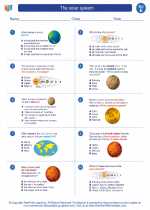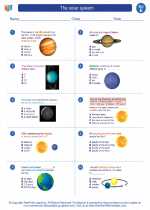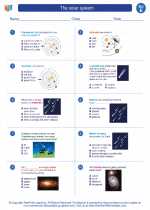Lenses
A lens is a piece of transparent material, such as glass, that is used to refract (bend) light. Lenses are used in various optical devices, such as cameras, microscopes, telescopes, and eyeglasses. There are two main types of lenses: convex lenses and concave lenses.
Convex Lenses
A convex lens is thicker in the middle and thinner at the edges. When light passes through a convex lens, it is refracted and converges at a point called the focal point. This causes the light rays to come together, resulting in the formation of a real or virtual image, depending on the object's position relative to the lens.
Some key terms related to convex lenses include:
- Focal Point: The point at which light rays converge after passing through a convex lens.
- Focal Length: The distance between the center of the lens and the focal point.
- Real Image: An image formed by the actual intersection of light rays. It can be projected onto a screen.
- Virtual Image: An image that appears to be located at a point from which light rays appear to diverge. It cannot be projected onto a screen.
Concave Lenses
A concave lens is thinner in the middle and thicker at the edges. When light passes through a concave lens, it is refracted and diverges. This causes the light rays to spread out, resulting in the formation of a virtual image.
Some key terms related to concave lenses include:
- Focal Point: The point from which light rays appear to diverge after passing through a concave lens.
- Focal Length: The distance between the center of the lens and the focal point.
- Virtual Image: An image that appears to be located at a point from which light rays appear to diverge. It cannot be projected onto a screen.
Study Guide
Here are some key points to remember about lenses:
- Understand the difference between convex and concave lenses in terms of their shape and the behavior of light passing through them.
- Be able to identify the focal point and focal length of a lens and understand their significance in the formation of images.
- Know the difference between real and virtual images and be able to explain how they are formed by convex and concave lenses.
- Understand the applications of lenses in everyday devices, such as cameras, microscopes, telescopes, and eyeglasses.
- Be familiar with common lens terminology and be able to use it to describe the behavior of light passing through lenses.
By understanding the principles of lenses and their behavior with light, you can appreciate their role in shaping our visual experiences and the functioning of various optical instruments.
[Lenses] Related Worksheets and Study Guides:
.◂Science Worksheets and Study Guides Fifth Grade. The solar system

 Worksheet/Answer key
Worksheet/Answer key
 Worksheet/Answer key
Worksheet/Answer key
 Worksheet/Answer key
Worksheet/Answer key
 Vocabulary/Answer key
Vocabulary/Answer key
 Vocabulary/Answer key
Vocabulary/Answer key
 Vocabulary/Answer key
Vocabulary/Answer key
